Kitchen design is constantly evolving, and what’s trendy today might feel outdated in just a few years. As we look ahead to 2030, certain kitchen trends are already losing their appeal, whether due to changing aesthetics, functionality concerns, or advancements in materials and technology. If you’re planning a kitchen renovation, here are 14 trends that experts predict will be completely obsolete by the end of the decade.
1. Two-Tone Cabinetry with Harsh Contrasts

Two-tone cabinetry—where upper and lower cabinets are painted in different colors—has been a popular trend in recent years. However, when these colors are highly contrasting, such as black and white or navy and bright yellow, the design can feel jarring and dated. By 2026, experts predict that kitchens with overly bold two-tone cabinets will lose their appeal as homeowners move toward more harmonious and cohesive designs.
As noted by Better Homes & Gardens, softer transitions between colors, such as pairing natural wood tones with muted shades like sage green or soft gray, are becoming more popular. This approach creates visual interest without overwhelming the space. If your kitchen features bold two-tone cabinetry, consider repainting the cabinets in complementary hues or opting for a monochromatic palette to achieve a more timeless look.
2. Stainless Steel Appliances Everywhere

Stainless steel appliances have dominated kitchens for decades, but their reign is coming to an end. While they remain functional and durable, the ubiquity of stainless steel has made it feel generic and overused. Additionally, these appliances tend to show fingerprints and smudges easily, making them high-maintenance for busy households. By 2026, homeowners are expected to favor appliances with matte finishes, bold colors, or custom paneling that seamlessly integrates with cabinetry.
According to House Beautiful, panel-ready appliances that blend into the kitchen design are growing in popularity, creating a sleek and cohesive look. Alternatively, bold appliance colors like deep blue or matte black can add personality without dominating the space. If you’re planning a kitchen renovation, consider investing in appliance finishes that enhance the overall design while offering a fresh alternative to stainless steel.
3. Pot Racks Hanging Over Islands

Pot racks suspended over kitchen islands were once a practical and stylish way to store cookware. However, by 2026, this trend is expected to fall out of favor as homeowners prioritize cleaner, less cluttered designs. Hanging pot racks can make kitchens feel visually busy and cramped, especially in spaces with lower ceilings. They also collect dust and grease, making them more of a hassle to maintain than modern storage solutions.
As highlighted by The Spruce, many homeowners are opting for concealed storage options, such as deep drawers, pull-out shelves, and vertical dividers, to keep cookware organized and out of sight. These alternatives not only improve functionality but also contribute to a streamlined, minimalist aesthetic. If your kitchen currently features a hanging pot rack, consider removing it and replacing it with smarter storage solutions to update the look and feel of your space.
4. Open Shelving Everywhere
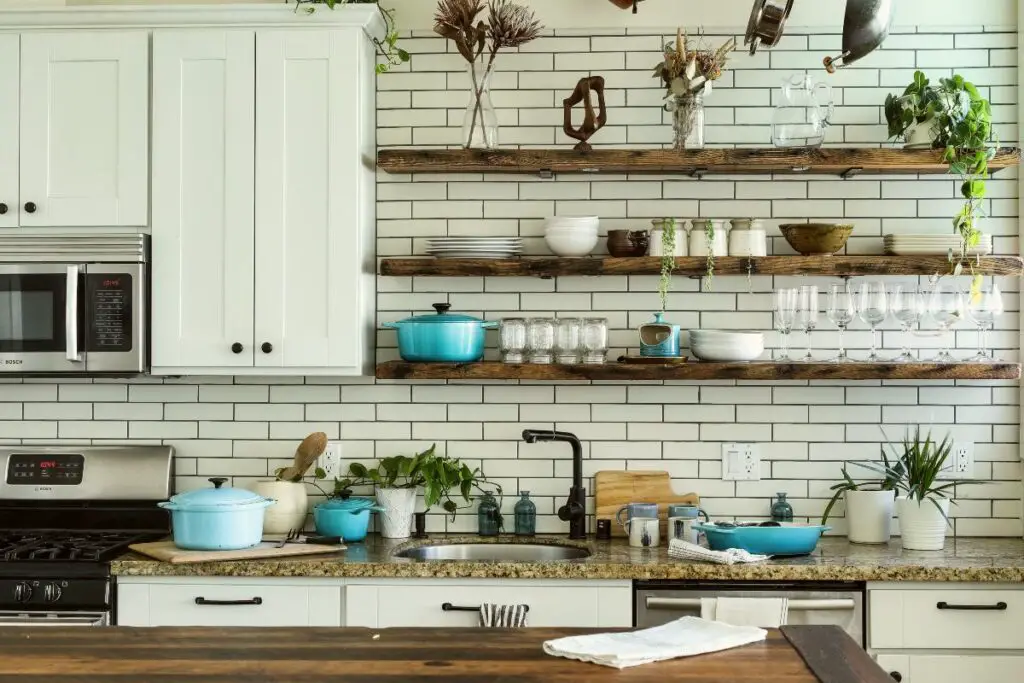
Open shelving has been a popular design choice for its ability to make kitchens feel airy and modern. However, its practicality is coming under scrutiny. By 2026, experts predict that the widespread use of open shelving will decline due to its tendency to collect dust, grease, and clutter. While it can look stylish in carefully curated kitchens, maintaining open shelves often requires constant cleaning and organization—something most homeowners find inconvenient.
As noted by House Beautiful, many homeowners are opting to strike a balance by using a mix of open shelving and closed cabinets. This approach provides the same sense of openness without sacrificing functionality. If you love the look of open shelving, consider using it sparingly for decorative items or frequently used essentials while keeping the majority of your storage enclosed.
5. All-White Kitchens
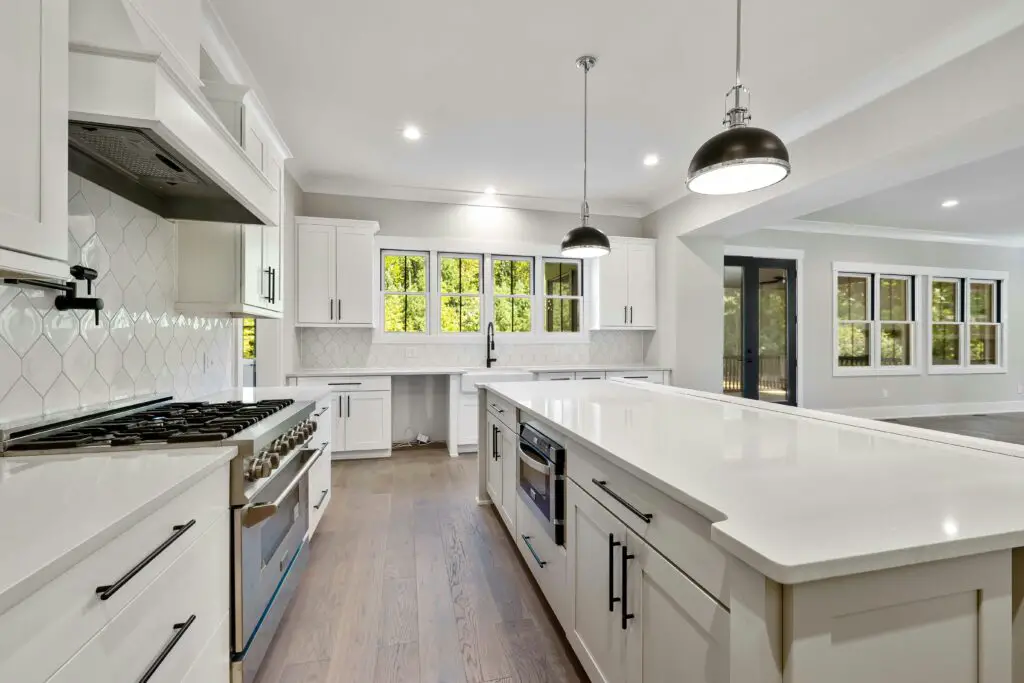
All-white kitchens have been a mainstay of interior design for years, symbolizing cleanliness and simplicity. However, by 2026, this trend is expected to fade. Homeowners and designers alike are shifting toward warmer, more inviting color palettes that include natural wood tones, earthy greens, and rich blues. All-white kitchens are often criticized for feeling cold and sterile, and they can be difficult to maintain, as dirt, stains, and scuffs are more noticeable on white surfaces.
According to Better Homes & Gardens, adding color and texture through cabinets, backsplashes, or countertops can make a kitchen feel more welcoming and less clinical. While white elements can still work as accents, kitchens dominated by white are quickly losing their appeal. Incorporating natural materials like butcher block counters or stone backsplashes is a great way to modernize the space while keeping it timeless.
6. Overly Industrial Kitchens

Industrial-style kitchens with exposed ductwork, concrete countertops, and metal accents gained popularity for their edgy, urban aesthetic. However, this trend is beginning to wane as homeowners gravitate toward softer, cozier designs. Industrial kitchens can feel too stark or impersonal, and their reliance on cold materials like steel and concrete can make the space less inviting.
According to The Spruce, blending industrial elements with warmer finishes, such as natural wood or soft textiles, can create a more balanced and livable space. Designers are moving toward styles that incorporate industrial details as accents rather than defining features. If your kitchen leans heavily into the industrial look, consider swapping harsh materials for warmer, more natural textures to create a modern yet welcoming atmosphere.
7. Massive Kitchen Islands
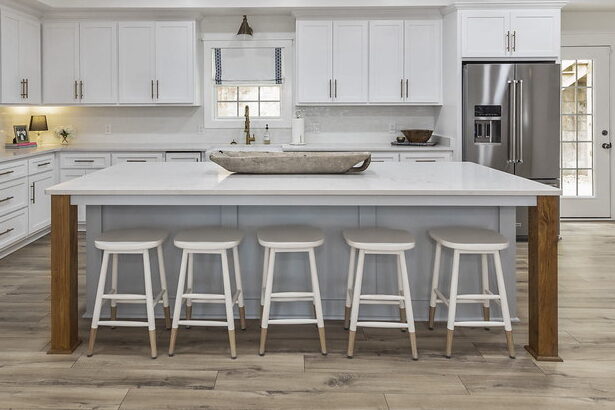
Large kitchen islands have long been a status symbol, offering ample space for meal prep, storage, and seating. However, by 2026, the trend of oversized islands is expected to fade. These massive structures can dominate the room, making kitchens feel cramped and less functional. Additionally, they often require more space than many kitchens can comfortably accommodate, leading to inefficient layouts.
As reported by Architectural Digest, smaller, more purposeful islands are becoming the preferred choice for modern kitchens. Compact islands with built-in storage and multifunctional features, such as pull-out cutting boards or hidden charging stations, offer greater practicality without overwhelming the space. Homeowners looking to update their kitchens should focus on islands that enhance the flow and functionality of the room rather than prioritizing size alone.
8. Overly Busy Backsplashes
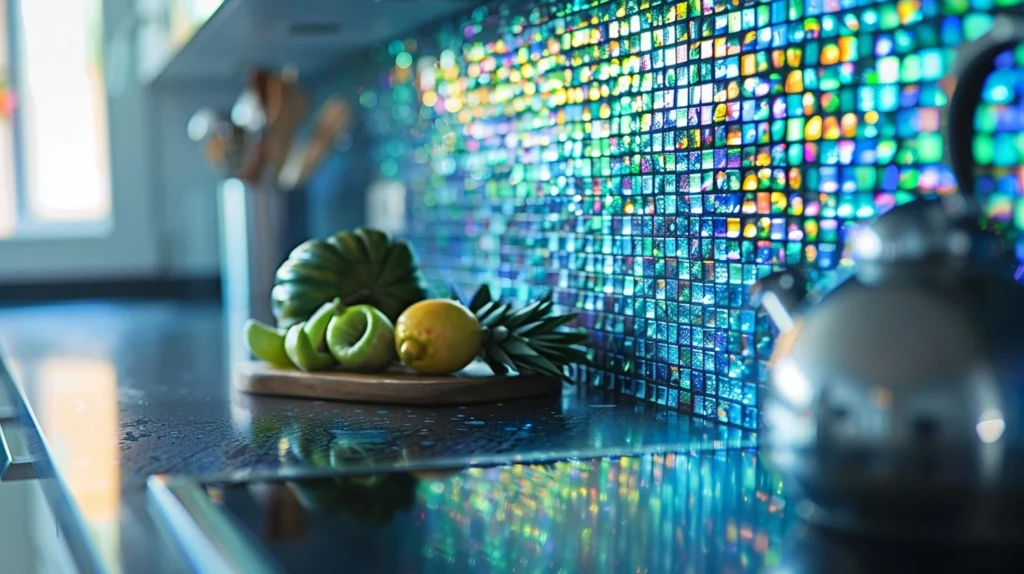
Bold backsplashes with intricate patterns, such as mosaic tiles or complex geometric designs, have been a staple of kitchen design for years. However, by 2026, experts predict that these overly busy backsplashes will fall out of favor. While they were once used to add personality and flair to kitchens, they can make the space feel cluttered and visually overwhelming, especially in smaller kitchens. Additionally, bold backsplashes often clash with other design elements, making it harder to achieve a cohesive look.
According to Realtor.com, the trend is shifting toward simpler, timeless options like solid subway tiles, large-format tiles, or natural stone slabs. These styles provide texture and depth without overwhelming the space, creating a more sophisticated and clean aesthetic. If you’re looking to update your kitchen, opt for a neutral backsplash that complements your countertops and cabinets, ensuring the design will remain in style for years to come.
9. Dark, Moody Kitchens
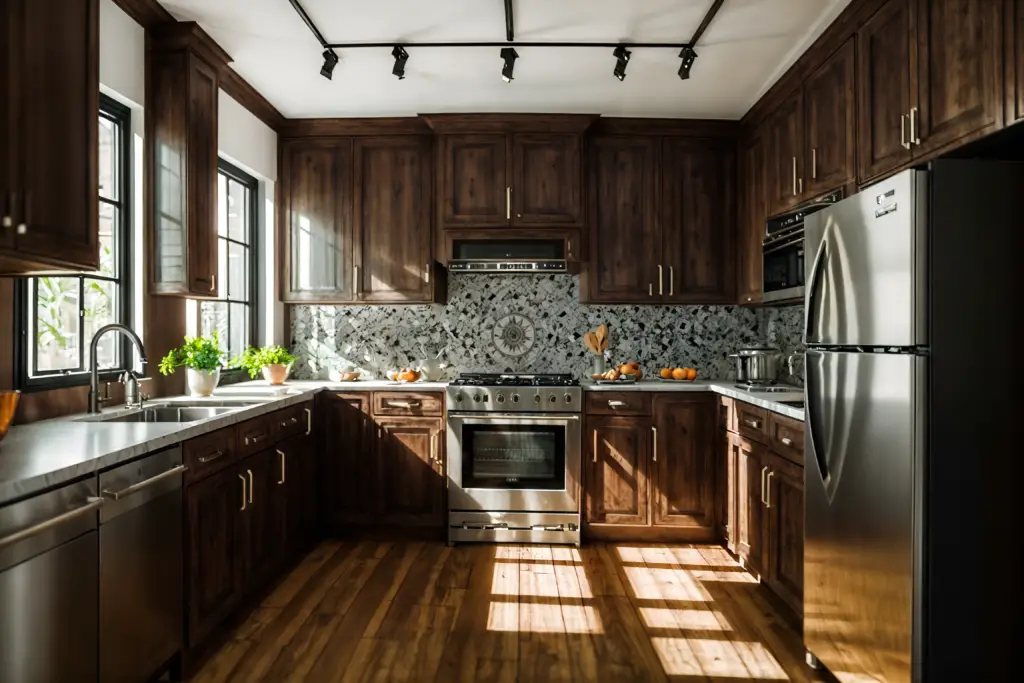
Dark kitchens featuring black cabinets, dark countertops, and low lighting have been a trendy choice for those seeking a dramatic, modern look. However, by 2026, this style is expected to decline as homeowners gravitate toward brighter, more inviting spaces. Dark kitchens can feel heavy and oppressive, particularly in homes with limited natural light. They also tend to make smaller kitchens feel even smaller, which can be a dealbreaker for buyers.
According to Architectural Digest, lighter, warmer kitchens with natural materials and brighter lighting are becoming the new standard. Adding elements like light wood cabinets, quartz countertops, and LED lighting can create a more welcoming atmosphere. If your kitchen features a dark, moody design, consider incorporating lighter finishes and better lighting to refresh the space and make it more appealing.
10. Microwave Over the Range

Installing a microwave over the range was once a common design solution to save counter space, but this setup is increasingly viewed as outdated and impractical. Microwaves placed above stovetops can be difficult to reach for shorter individuals and may pose safety concerns when handling hot food. They also limit the functionality of the range hood, reducing its ability to properly ventilate cooking odors and smoke.
As reported by CNET, built-in microwaves installed in lower cabinets or as part of a wall unit are becoming the preferred option for modern kitchens. These alternatives offer better ergonomics and free up space above the stove for a dedicated range hood. If your kitchen has a microwave above the range, consider relocating it to a more convenient spot and upgrading to a high-performing range hood to improve both aesthetics and functionality.
11. Speckled Granite Countertops
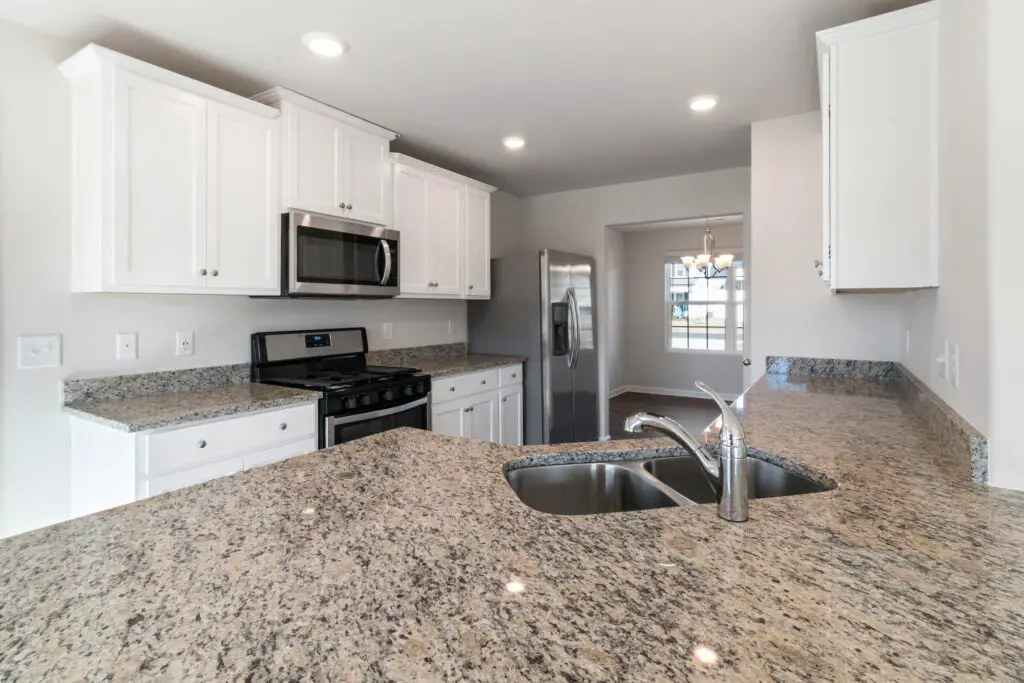
Speckled granite countertops were once a sign of a high-end kitchen, but by 2026, they are expected to be viewed as dated and overly busy. While granite is a durable material, its speckled patterns often clash with modern minimalist designs and can make a kitchen feel visually chaotic. Additionally, granite requires regular sealing and maintenance, which many homeowners find inconvenient compared to newer materials like quartz.
According to Forbes, quartz countertops have surpassed granite in popularity due to their wide range of styles, low maintenance, and cleaner, more contemporary look. Quartz can mimic the appearance of marble or solid stone while providing better durability and stain resistance. If your kitchen features speckled granite, consider replacing it with a neutral quartz surface to give the space a fresh, updated feel that aligns with modern preferences.
12. Farmhouse Sinks Everywhere

Farmhouse sinks, also known as apron-front sinks, have been a defining feature of kitchens inspired by rustic or farmhouse design. However, experts predict that their overuse will make them less desirable by 2026. While these sinks are undeniably charming, their large size and distinctive look often limit their compatibility with other design styles. They can also be more expensive to install and maintain than standard undermount or drop-in sinks.
As noted by Realtor.com, buyers are shifting toward more versatile and understated sink designs, such as stainless steel or composite options that blend seamlessly with modern and transitional kitchens. Farmhouse sinks can feel out of place in contemporary or minimalist spaces, reducing their long-term appeal. If you’re renovating your kitchen, consider a sleek, undermount sink that complements a variety of design aesthetics and provides practical functionality without dominating the room.
13. Glossy Cabinets

Glossy cabinets, especially those in bright colors like white or red, were once a popular choice for creating a sleek, modern look. However, these high-shine surfaces are increasingly viewed as impractical and dated. Glossy finishes are notorious for showing fingerprints, smudges, and scratches, making them difficult to maintain in busy households. Additionally, the reflective surface can create glare and make the kitchen feel overly sterile or cold.
According to Better Homes & Gardens, homeowners are now opting for matte or satin finishes that provide a softer, more inviting look while being easier to clean and maintain. Matte finishes also pair well with natural materials like wood and stone, creating a balanced, timeless aesthetic. If your kitchen features glossy cabinets, consider repainting or refacing them with a matte finish to align with current design trends and make the space feel more welcoming.
14. Overly Ornate Cabinetry

Cabinets with intricate carvings, heavy molding, or elaborate details were once considered a mark of luxury. However, by 2026, this style is expected to feel outdated and out of sync with the clean, streamlined designs favored by modern homeowners. Ornate cabinetry can make a kitchen feel visually heavy and difficult to update, particularly as minimalist and Scandinavian-inspired aesthetics continue to rise in popularity.
As highlighted by House Beautiful, simple, flat-front cabinets with subtle hardware are becoming the preferred choice for contemporary kitchens. These designs are versatile, easier to clean, and create a sense of openness in the space. If your kitchen features overly ornate cabinetry, consider replacing or refacing the cabinets with a more modern, minimalist style to give the room a fresh, updated look.
